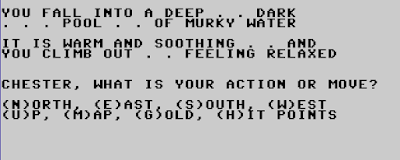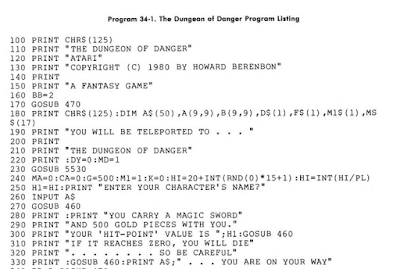Most of the time, when we put down a challenge, it's
definite - a note that the story
will be focusing on a particular point. But is it possible to use challenges differently? To lay down a challenge for something the players
might want to focus on, but are not required to focus on?
I believe it is a tool for the toolbox...but one I would show great caution in using. I've only pulled out an optional challenge once or twice in my own games, and I am wary of using them often, if at all, in my own narration generally. Storium's rules are set up more for completion of challenges and requiring of challenges, and I think there's a good reason for that.
In setup, an optional challenge wouldn't be so different from a regular challenge - you still want to establish the starting situation, the facts of the challenge, and the possible places the challenge can end up once it is complete. There's not much different in the overall technique of setting it up.
But should you decide to use this tool, I think there are some very important things you will need to be sure you address.
First: How will you know if players are or are not going to play on the challenge? You will need a good way of knowing if players have not played on a challenge yet because they haven't gotten to it yet, or because they do not intend to play on it at all. An optional challenge, being optional, could be ignored completely by players for reasons that have nothing to do with slow play or inactivity. It is important to have a way of determining that the players are not going to play on the challenge, and that it is time to move the scene on.
I suggest that you consider one of the following ideas:
- Set a deadline based on the other challenges - if the optional challenge is not completed by the time the scene's other challenges are, you will consider it incomplete and move the scene on.
- Set a deadline based on actual time - if the optional challenge is not completed within X days after the rest of the scene's challenges are (or just within X days if there are no other challenges) you will consider it incomplete and move the scene on.
- Require an affirmative statement from a player that they intend to play on the optional challenge by a specific date. If you have no such statement by that date, you will remove the optional challenge.
These methods are probably not the only ones...or even likely the best...but they all allow you to know when you can regard the challenge as incomplete and move forward. Whatever choice you make, be sure you tell your players so they know what the requirements are.
Second: What happens when the optional challenge is incomplete?
This is a pretty important question, and one that, I think, gets at the reason I don't use optional challenges much. If something's critical enough to the story that you want to set up a challenge for it, it seems like it is something the group should have to interact with - even if their interaction is playing Weakness cards and having their characters utterly ignore it and let it go wrong. In other words, the characters might not care about something, but if it is important enough to the story to rate a challenge, the players should have to do something about it...even if that something is having their characters do nothing. The story of the challenge, once laid out, should probably progress.
If it goes well, then, it ends Strong. If it goes poorly, it ends Weak. If it is less clear, it ends Uncertain. But that's all determined by the cards.
So...what do you do with a challenge that seemed interesting enough to put out there as an option, but that seems like something the character's don't have to address?
My best bet is that you do nothing. An optional challenge is something that is interesting, but not critical. The players don't gain or lose anything by not going after it. It's only if they actually engage it that it matters to the story in any way.
Thus, if the players don't seem interested in it and leave it alone, it just drops off for the moment. Nothing bad happens, nothing good happens. It just fades away into the background again.
That's not to say you can't bring it back again later, or bring it back again later as a normal, required challenge. It's just that for the moment, it wasn't critical enough to be made required, so nothing's reaching any kind of story-altering point with it. It just fades away for now.
If on the other hand players play some of the cards on the challenge, but don't finish it, I'd probably go by my usual rule for ending a challenge early when it becomes absolutely necessary: Most likely, end it by whatever the current result would be (i.e. if it is going Strong, it ends Strong, if it is going Weak, it ends Weak, if it is going Uncertain, it ends Uncertain) - this method makes the players' card plays so far clearly matter, so that's my preference. If you use a different rule for those cases in your own games, be consistent.
But that brings me to another consideration...
Third: How many points do you put on the thing, anyway?
I'm going to just say outright that I think the answer is one, possibly two at maximum. An optional challenge is not the focus of the scene - it is by definition something that can be entirely ignored. Thus, it isn't anywhere near as important as other challenges, and shouldn't get a lot of focus in the scene at hand.
Furthermore, if you put more points on an optional challenge, it makes it harder to judge when players no longer care about it - once it has become active, how do you judge that it isn't going to be active any further? You can always rule that an optional challenge becomes required if at least one player plays a card on it, of course, but that could get messy in terms of game morale and community if players disagree about whether they want to play on it.
So...I suggest making your life as easy as possible by using only one or two points, tops, and making clear to your players that whatever "deadline" you set for the optional challenge is a completion deadline, not a play deadline - the challenge needs to be complete by then or you will move things on. That will prevent an optional challenge from causing delays.
Finally, though: Consider whether the challenge should even be optional in the first place.
Most of the things I've considered as, well, optionally "optional" challenges were ideas that I ended up deciding would either fit perfectly well as required challenges right then, or would fit perfectly well as required challenges later. I've rarely come across something that I considered important to note in challenge form, but not critical enough to be something the players had to address.
If you're considering an optional challenge, think about it a bit more for a while...is it really something that should be optional, or is it just something that hasn't come to a head yet? Maybe it's something you can get some actual drama out of later, and make it a normal challenge in a later scene. Or maybe it's something you can hint at with a minor required challenge now - perhaps to see if someone notices something - and bring in more fully down the line.
Or perhaps it is something that actually is pretty vitally important right now, in which case it should be a required challenge...right now.
So, when can an optional challenge be helpful?
I could see them being useful if you want to allow the group to choose a direction, but neither direction is necessarily better or worse for the story (if one direction is better and the other is worse, you'd instead do a regular challenge and set the first up as the Strong outcome and the second as the Weak). Then, you could set up two different one-point challenges, and tell the players they can only do one of them - that sets them off on that path and determines how it starts out for them.
It isn't my chosen way to find where the players want to go in the story, but I could see it working.
Another method might be something that is solidly an opportunity for the players - again, if they don't do anything, it doesn't go wrong or anything like that, but perhaps it is something they can use to "shortcut" the plot in some way. You'd have to be careful with this one - it's easy to run into the "why don't you just do this as a regular challenge" internal question - but there are ways I could see it working. If you do this, then, the Strong result is very good for the characters, and the Weak result is perhaps less so, but still generally quite good.
The problem I run into myself with that is that if you use that method, it becomes hard to argue that things aren't worse if the player decide not to play the challenge...in which case, again, I feel like it probably shouldn't be optional because it impacts the story in a notable way. And that's exactly where I've ended up when I've reflected on the few times I've used optional challenges...I end up feeling like what I did was render a part of the story optional when it was actually going to have a definite impact.
And that's the point I keep coming back to myself in considering this - I just generally can't justify putting a challenge down and treating it as "optional." When I put a challenge down, it means that a notable event has started in the story, and the players, through their card plays, need to see where it goes. It needs to get to some conclusion or another, so that we know where the story goes after it. When I find myself thinking of perhaps telling my players a challenge is optional, I start instead thinking of whether it should be there yet at all.
But: I know that this is a technique some other narrators have used in the past, and I'd very much be interested to hear others' thoughts on it. Have you used optional challenges? What did they represent in your game? And how did you ensure that you knew it was fine to move the game forward? Write in, and let me know!








































